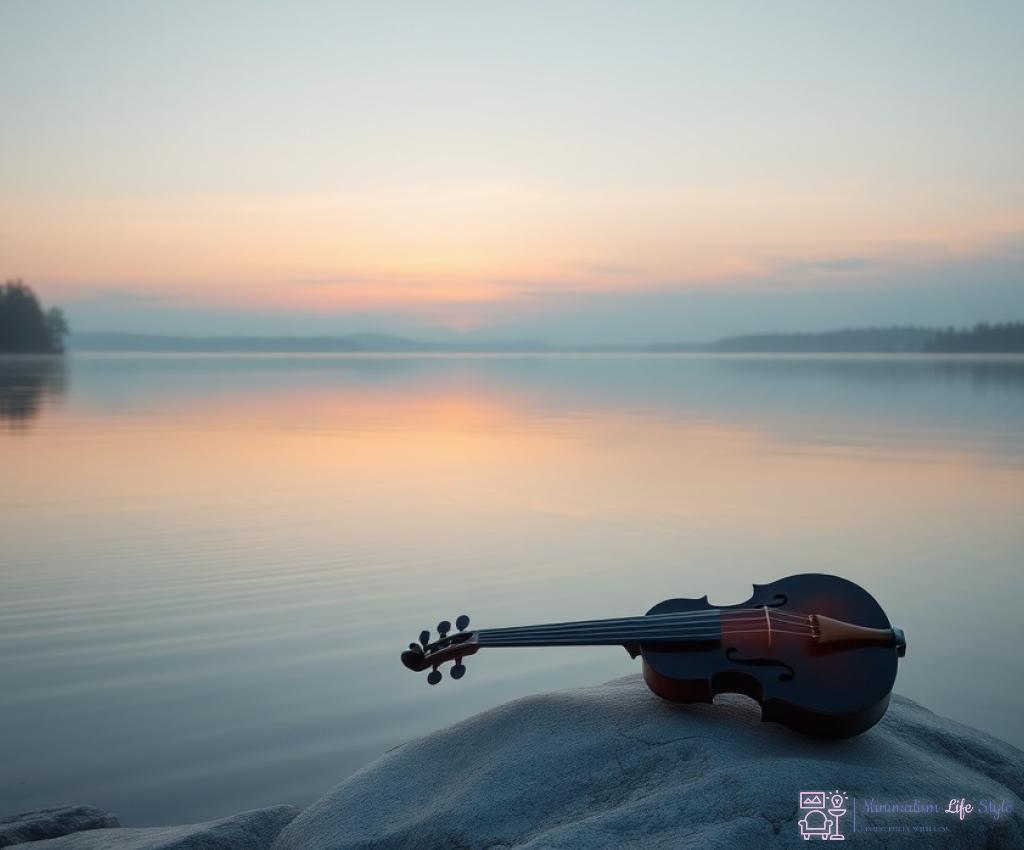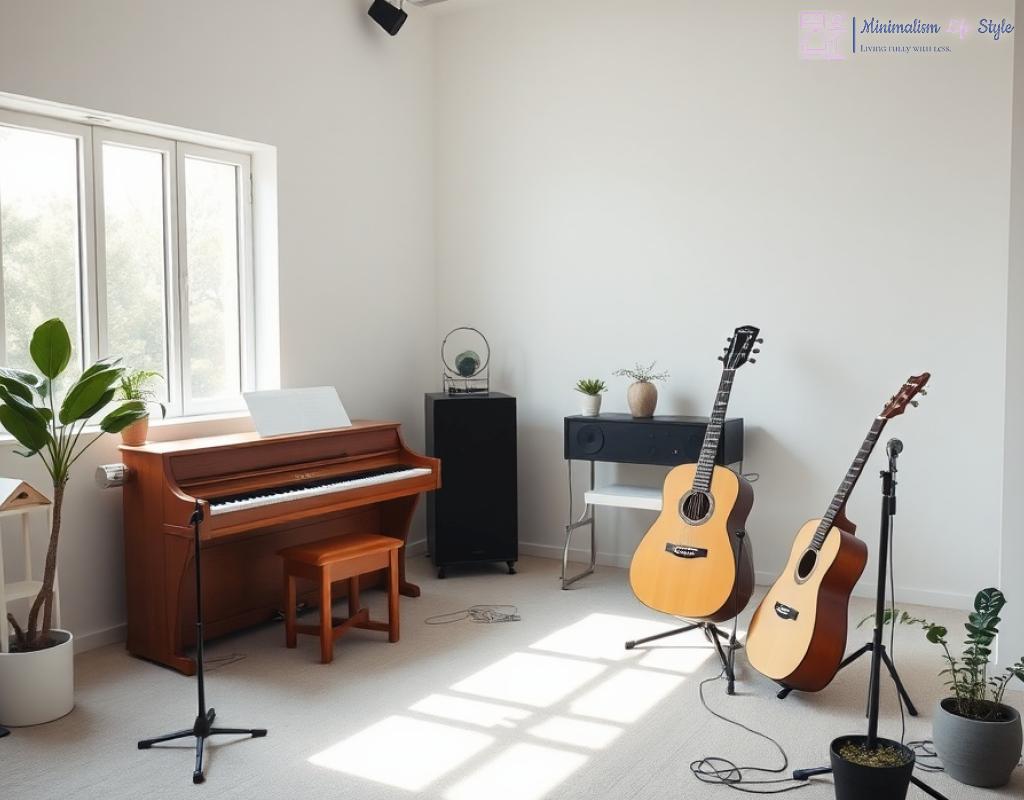The Beauty of Simplicity: Understanding Minimalism in Music
In a world bombarded with noise and complexity, minimalism in music emerges as a refreshing antidote. This artistic movement embraces the idea that less is often more, allowing listeners to connect with sound on a deeper level. Minimalist composers strip away the unnecessary, honing in on the fundamental elements of rhythm, melody, and harmony. This approach not only enhances the listening experience but also invites us to appreciate the beauty in simplicity.
To truly grasp the concept of minimalism in music, it’s essential to understand its core elements. Minimalist music is characterized by repetitive motifs, gradual transformations, and a focus on tonal harmony. Unlike traditional compositions that may rely on intricate arrangements and a plethora of instruments, minimalist pieces often use a limited number of sounds or instruments, creating a rich tapestry of auditory experience.
Here’s a list that illustrates the key characteristics of minimalist music:
- Repetition: Simple phrases are repeated, creating a hypnotic effect.
- Gradual Change: Subtle variations are introduced over time, allowing listeners to notice the evolution of sound.
- Limited Instrumentation: Fewer instruments are used, which emphasizes the individual sound of each.
- Focus on Tonality: A strong adherence to tonal centers creates a sense of stability.
- Spatial Awareness: The use of silence and pauses enhances the overall impact of sound.
Embracing minimalism in music education offers a unique opportunity for both teachers and students. By focusing on the essentials, educators can encourage students to explore their creativity without the distractions of excessive equipment or elaborate setups. This method fosters a deeper understanding of sound and promotes an appreciation for nuanced musical expression.
Through minimalist practices, students learn that music can be created with just a few tools or instruments, emphasizing innovation and resourcefulness. This approach not only cultivates artistic skills but also instills a sense of mindfulness—an essential life skill in today’s fast-paced world.
Essential Instruments: Making Music with Less

In the pursuit of a minimalist approach to music, the selection of instruments plays a pivotal role in shaping the auditory experience. It’s not about the quantity of instruments but rather the quality and versatility that they bring to a composition. By choosing essential instruments, musicians can explore the depths of sound while embracing the core principles of minimalism.
Imagine a world where a single instrument can convey a range of emotions and ideas. This is where the beauty of minimalist instrumentation shines. Instruments such as the piano, guitar, and hand drums can serve as powerful tools in the hands of a skilled musician. Each instrument has its unique voice, and when used thoughtfully, it can create a rich landscape of sound that captivates listeners.
When working within a minimalist framework, versatility is key. A well-struck piano chord can evoke feelings of joy or melancholy, depending on how it is played. Similarly, a simple guitar riff can be transformed into a haunting melody with just a slight change in tempo or dynamic. This adaptability allows musicians to convey depth and complexity without overwhelming their audience.
Moreover, the use of everyday objects as instruments can further enhance this minimalist philosophy. Items such as water bottles, boxes, or even clapping hands can produce interesting sounds that challenge traditional notions of musicality. By incorporating these unconventional instruments, musicians foster a sense of creativity and exploration, pushing the boundaries of what music can be.
In a minimalist setup, creating a cohesive sound palette is essential. Musicians need to carefully consider how each instrument interacts with the others. A well-balanced ensemble can produce a harmonious blend of tones, creating a captivating auditory experience. For example, pairing a deep resonant drum with a soft, airy flute can create a beautiful contrast that highlights the strengths of both instruments.
Additionally, this minimalist approach encourages musicians to focus on the interplay of silence and sound. In many minimalist compositions, pauses hold as much significance as the notes played. These moments of silence allow the audience to reflect and absorb the music, fostering a deeper connection to the performance.
Ultimately, minimalist music teaches us that we do not need an abundance of instruments to create impactful art. By embracing essential instruments and exploring their full potential, musicians can craft beautiful pieces that resonate on multiple levels. This journey into minimalism not only enriches the listening experience but also empowers musicians to innovate within a simplified framework.
Soundscapes and Silence: Exploring Minimalist Composition

In the realm of minimalist music, the juxtaposition of soundscapes and silence creates a profound auditory experience that invites listeners to immerse themselves fully in the moment. This exploration of sound goes beyond mere notes and rhythms; it delves into the very essence of what music can communicate. By shifting focus from complexity to simplicity, minimalist compositions reveal a world where every sound holds significance and silence becomes an integral part of the musical narrative.
At the heart of minimalist composition lies the concept of soundscapes—rich auditory environments crafted from limited resources. These soundscapes are not merely a collection of sounds, but rather a careful arrangement that evokes a sense of place and emotion. When we listen to a minimalist piece, we are often transported to a different world, one where the subtleties of sound take center stage. This immersive experience can be particularly valuable in educational settings, as it encourages students to engage with music on a deeper level, fostering creativity and a sense of exploration.
Silence, often overlooked in traditional compositions, plays a crucial role in minimalist music. It is not simply the absence of sound; instead, it is a canvas upon which the notes are painted. In minimalist compositions, silence punctuates the music, allowing listeners to reflect on what they have heard and anticipate what is to come. This intentional use of silence can create a dramatic tension that enhances the overall impact of the piece.
For instance, a single note sustained in silence can resonate deeply, evoking emotions that may not be conveyed through a flurry of notes. This principle can serve as a powerful teaching tool, helping students understand that the spaces between sounds are just as important as the sounds themselves. By incorporating silence into their own compositions, students learn to appreciate the nuances of musical expression and develop their ability to convey meaning through restraint.
In teaching minimalism through music, cultivating an awareness of sound becomes paramount. Students can be encouraged to listen actively, identifying the various layers of sound within a piece and recognizing how they interact with each other. This practice not only enhances their listening skills but also deepens their understanding of the compositional process. By analyzing minimalist works, students can see how composers create intricate soundscapes with minimal resources, sparking their own creativity in the process.
Furthermore, the exploration of unconventional sound sources can expand students’ horizons. Encouraging them to experiment with everyday objects as instruments can lead to new and exciting sonic possibilities. As they engage with different materials, students learn that music is not confined to traditional instruments, but rather is an expansive field limited only by their imagination. This approach fosters innovation and a sense of ownership over their artistic expression.
Ultimately, the journey into minimalist composition can be a transformative experience for both educators and students. By emphasizing the beauty of soundscapes and the power of silence, we equip the next generation of musicians with the tools to create impactful art that resonates deeply with audiences. In the world of minimalism, we discover that true musical expression lies not in abundance, but in the thoughtful arrangement of sound and silence.
Teaching Techniques: Engaging Students with Minimal Gear
In the realm of music education, minimalism serves as a powerful philosophy that encourages both creativity and resourcefulness among students. By adopting a minimalist approach, educators can cultivate an environment where students are empowered to explore sound without the constraints of excess equipment. This journey begins with recognizing the potential of simple, essential tools that can yield profound musical expression.
Utilizing a limited set of instruments, such as a keyboard, a ukulele, or even homemade percussion instruments, allows students to focus on the fundamentals of music creation. By stripping away the distractions of elaborate setups, learners can immerse themselves in the essence of sound, rhythm, and melody. This approach not only enhances their understanding but also fosters a sense of ownership over their musical journey.
Engaging students in group activities can amplify the impact of minimalist teaching techniques. By encouraging collaboration, educators can facilitate an atmosphere where students are inspired to share ideas and experiment with sound together. In these interactive sessions, students can create unique compositions using just a few instruments, fostering a sense of community and shared creativity. This collaborative spirit not only enhances their musical skills but also builds social connections that are vital for personal growth.
Students can participate in group challenges where they must compose a piece using a designated set of instruments or sounds. This exercise prompts them to think critically about how to create rich soundscapes with limited resources. In this way, they learn to appreciate the diverse capabilities of each instrument and the beauty of sound produced through teamwork.
One of the most revolutionary aspects of teaching minimalism through music lies in the exploration of unconventional sound sources. By encouraging students to use everyday objects—like kitchen utensils, bottles, or even their own voices as instruments—educators can expand their understanding of what constitutes music. This practice challenges traditional notions of musicality and opens the door to an infinite realm of creativity.
Engaging students in sound exploration can lead to unexpected discoveries. For instance, a simple box can become a percussive tool, while a water bottle might produce melodic sounds when blown into. This hands-on approach allows students to embrace experimentation, which is crucial in developing their artistic voice. As they discover new ways to create sound, they learn that music is not solely defined by conventional instruments but is a vast landscape waiting to be explored.
Creating Impact: The Power of Fewer Notes
In a world where music often bursts with complexity and embellishment, embracing the idea of fewer notes can lead to profound musical experiences. The power of simplicity in melody not only challenges the conventional approach to music composition but also invites both students and educators to discover the beauty hidden within minimalistic frameworks. By focusing on the essential, musicians can convey emotion and meaning with remarkable clarity, transforming their compositions into impactful narratives.
Less Can Be More when it comes to creating memorable melodies. A simple, yet well-placed note can carry as much emotional weight as an elaborate musical phrase. In minimalist compositions, the deliberate choice of fewer notes allows for a greater exploration of dynamics and articulation. For instance, consider how a single sustained note can evoke a sense of longing or tranquility, while a flurry of notes may dilute that emotional impact. This principle can inspire students to refine their musical ideas, honing in on what truly matters in their compositions.
Furthermore, the strategic use of silence in conjunction with fewer notes creates a dynamic contrast that captivates listeners. Just as a painter uses negative space to enhance their artwork, musicians can employ silence to amplify the significance of sound. For example, a brief pause before a powerful chord can heighten anticipation, making the subsequent note resonate with greater intensity. This technique teaches students that silence is not merely the absence of sound but a vital component in shaping the overall musical narrative.
Emotional Resonance Through Simplicity is another crucial aspect of minimalism. When students learn to create music with fewer notes, they are encouraged to think critically about the emotional journey they wish to convey. By experimenting with different intervals and rhythms, students can discover how a slight alteration in note choice can evoke vastly different feelings. This exploration fosters a profound connection between the musician and the audience, as both are invited to engage with the music on a more intimate level.
The classroom becomes a vibrant space for experimentation, where students can share their minimalist compositions and discuss the emotions they aim to express. This collaborative approach not only enhances their understanding of music but also builds a supportive community where creativity thrives.




